Phantom Thread: When bad fashion is good costume design
 Saturday, June 27, 2020 at 11:00PM
Saturday, June 27, 2020 at 11:00PM 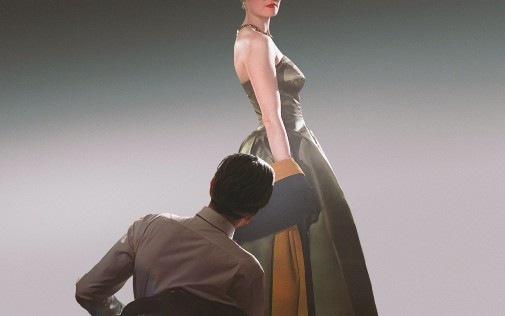
There are many ways to talk about Phantom Thread. My favorite Paul Thomas Anderson production is, among other things, one of the best films about romantic love I've ever seen, looking at the way that loving another person is to willingly become vulnerable to them. To love is, in essence, to open ourselves up to the possibility of mutually assured destruction. The picture is also a canny dissection of the muse/artist relationship, one that illuminates matters of obsession, dynamics between the sexes, the luxuriant pleasure of touching silk, and gazing upon that which is beautiful. It's all that and much more, a multifaceted jewel of cinema about which I could write endless rhapsodies of passionate praise.
Still, for this piece, let's look at the aspect of the movie that earned one of its makers an Oscar (and a jet ski). I invite you all to peruse the costumes Mark Bridges created for Phantom Thread, a film which proves that lackluster fashion can be masterful costume design…
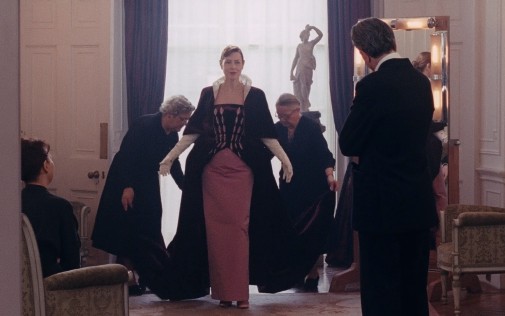
Phantom Thread tells the story of the unexpectedly twisted love affair between a controlling fashion designer and an immigrant waitress in 1950s England. Reynolds Woodcock is a renowned dressmaker whose clientele includes British aristocracy and foreign royalty. Woodcock is a war veteran and a mummy's boy who always carries something of the dead matriarch, be it a picture or a lock of hair, sown into the canvas of his suits. He's also an irritable asshole who can't so much as hear the scraping of a butter knife against toast without complaining about his spoiled routine. At the start of the film, we find him at the end of a particularly extenuated dress project and of an affair, a double dose of exhaustion that makes him drive to the countryside in search of relaxation. Instead of finding peace, he finds Alma.
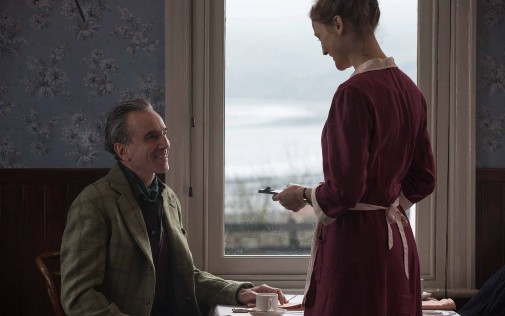
She's a waitress from an unspecified European country whose confidence charms Reynolds on their first meeting. What follows suit is a strange relationship, one where the woman submits to the man's controlling whims, becoming his muse, model, and dress form. However, attempts at categorizing Alma as a helpless victim would be wrongfooted. She quickly proves to have a backbone that perhaps none of Reynolds' past companions ever had, falling into a delightfully sick game of power and submission with her whining couturier. What's perhaps most surprising about the plot is that their grotesque arrangement works, making for a love story with an unlikely happy ending.
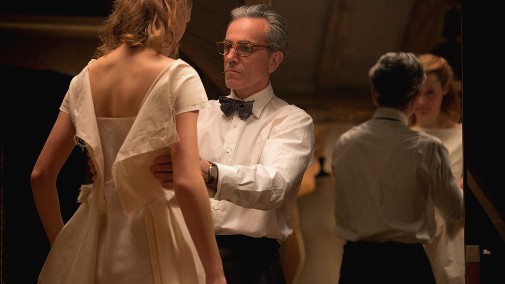
With fashion so central to the character's world and even their geography -- most of the picture is set inside the House of Woodcock's atelier -- Phantom Thread was one of those movies that was predestined to win major raves for its costumes. Indeed, that's what happened. That said, among the celebration, there were also words of dissent. Many tweets, reviews, and entire write-ups talked about how the costumes Bridges designed were singularly underwhelming despite their narrative importance and pristine construction. The fashions of Reynolds Woodcock are hardly spectacular and certainly pale in comparison to the designs of such contemporary couturiers as Christian Dior, Cristóbal Balenciaga, or Charles James.
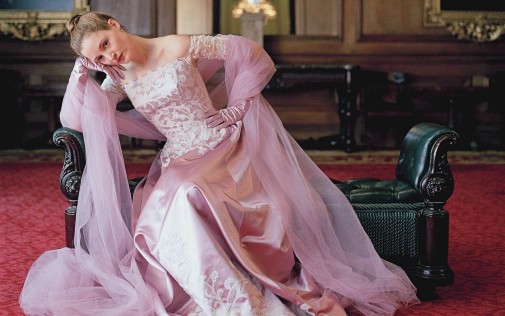
While I agree with those assessments, I think that calling Bridges' designs subpar because of their lack of cutting-edge style misses the point of the costumes and the film as a whole. Reynolds Woodcock may consider himself a genius worthy of worship and unquestioned obedience, but Anderson's vision doesn't necessarily share those delusions. The camera may rapturously observe the luxurious silks overlaid with Flemish lace, the precise construction of haute couture, and the erotic act of building a toile garment on someone's body, but its judgment of the finished pieces is never as straightforward. Upon seeing what was supposed to be a bridal tour-de-force, the only dress in the world, Reynolds himself describes his work as ugly.
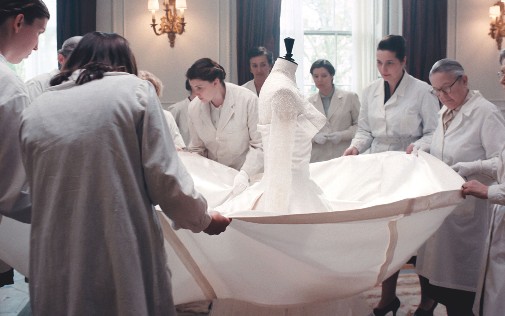
The garments produced by the House of Woodcock aren't particularly hic, neither are they bold or innovative. On the contrary, they are the product of a rigid mind, one that loses itself in details and misses the bigger picture. These clothes are fussy and even a bit mumsy, their silhouettes closer to those of wartime frugality than the new tendencies brought on by Dior's New Look. Instead of full-skirted, the gowns are often narrow or bell-shaped, constrictive in their elegance, ostentatious but seldomly opulent. More than reminding us of the Parisian visionaries of the same period, they are more akin to the stodgy stylings of Norman Hartnell, Digby Morton, Edward Molyneaux, and other British-based designers.

In most movies, costumes are used to characterize the action on two fronts. First, they establish a time and place, a tone that lets the audience discover the world and aesthetic of the picture. Second, they serve to point out specificities about their wearers. Many times, great costume designers use clothing as a means of building characters in the same ways a screenwriter may use dialogue. In Phantom Thread, however, the showstopper costumes aren't used to characterize those who wear them, but the man who created the clothing in the first place. The garments of the House of Woodcock aren't there to reflect the interiority of their models, to establish the mood of the scene, or to dazzle us with spectacle. They are there to tell us who Reynolds Woodcock is.
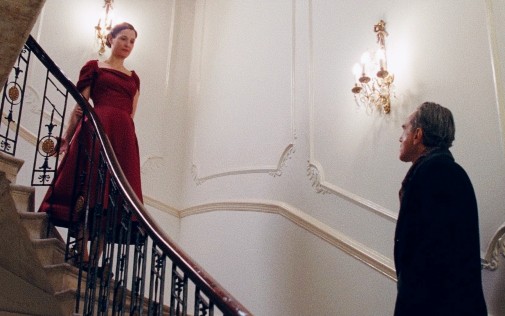
That's especially evident whenever a garment falls outside the realm of Woodcock's control. Notice how his designs are obsessively symmetrical, but, when Alma surprises her lover with an unexpected homemade dinner, she wears a piece of her design with an asymmetrical silhouette. That choice shows her autonomy from Reynolds, her defiance, and is immediately regarded with distaste by the man. Another interesting moment where we can see how Alma and Reynolds play out their relationship in the form of clothing is the fashion show where she wears what is, essentially, a stylized version of her maroon waitress uniform and apron from their first meeting. Whether he has done it wittingly or not doesn't matter, Reynolds has immortalized Alma in his collection, he's used her as part of his craft. On her part, she refuses to be so easily used and reduced to a passive mannequin.
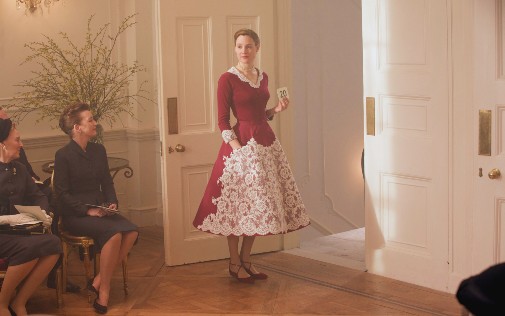
Phantom Thread shows us how avoiding the spectacle of high-fashion may be the right course of action, even when the production being outfitted is one centered on the fashion world. It's also a great example of how costuming can be as character-defining as the actor playing the role, with the caveat that it isn't always the one wearing the piece that's being defined.
Mark Bridges accomplishes all of this through the miracle of costuming, one so devastatingly perfect that I would go as far as to say that he's one of the most deserving victors in the history of the Best Costume Design Oscar.
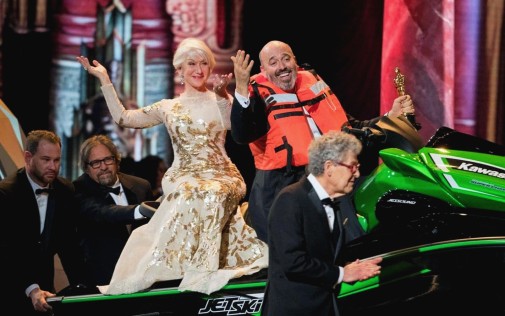
Phantom Thread is available to rent from Amazon, Google Play, Apple iTunes, Youtube, and others.
We hope you enjoyed our mini-celebration of Paul Thomas Anderson's 50th Birthday.
- How Had I Never Seen Hard Eight (1997) by Claudio Alves
- PTA's Familiar Faces by Nathaniel R
- The New Classics: The Master (2012) by Michael Cusumano



Reader Comments (24)
Gorgeous piece Claudio. I agree with the notion the clothes are not meant to possess the beauty of, say, Keira Knightley's green Atonement dress, and I think Bridges has actually spoken about this intention. And I think whilst many of us would enjoy the pure spectacle of well designed couture in the style of Dior, the film and its intentions to flirt with and dismantle the male gaze would not have nearly as successful.
Great article!
Costumes in movies are not necesary to be beautiful or perfect, they have to be meaningful for the story or the director's vision and Bridges does it.
I guess I'm fashion-illiterate because I thought they were quite gorgeous.
I'm with Jonathan. I thought these were all really nice so I never thought about this movie that way. Really great article!
I watched this 30 minute youtube video where someone complained about how horrible the costumes from Little Women were and Jacqueline Durran didn't deserve to win because nothing was period accurate. I was stunned, I loved the costumes from Little Women. But it's an interesting perspective, it's just one that I don't have at all.
Taste is subjective dear Cláudio
To me, these costumes come across as luxurious and often beautiful but also twee, fussy and old-fashioned, even within the 1950s setting – the dress that Reynolds designs for Gina McKee's Countess (in the second photo in this article) is the perfect example, as it comes across aristocratic but also like a pretty ridiculous middle-aged Snow White caricature. And I think that's entirely the point of the costume design! In the movie, they acknowledge that the House of Woodstock's style's going out of fashion and his ageing clients (the Countess included) are deserting them for more modern designers. I agree that it's absolutely great design that achieves so much in setting the period, his personality and how it contrasts with Alma's.
I agree, Cláudio. One of the best winners ever.
Yeah, this is a great winner for costume design, at least. I'm cooler on the movie than you, but I can at least concede the costume design win was right. Why am I cooler on the movie? It could probably stand to lose twenty-thirty minutes, don't name your jackass character Woodcock(!) if you're not a comedy, and, well, Vicky Krieps...yeah, she's not a leading lady. Especially not with a role like this, which, sorry, needs WAY more than she's able to give.
It is obvious he needs to move with the times and I always think he and Alma would have collaborated more and become more modern.
Volvagia -- except PTA does consider this a romantic comedy. I'm in the minority about agreeing with you on Vicky Kreips. I know she has a lot of fans but I think more innate star magnetism would've helped this role... though i like that he chose an unknown.
Nat: To clarify: When I say "comedy", I'm talking something...way sillier...than this, which, if it is comedy, is going for deadpan. Not all comedy requires nuance, but deadpan absolutely DOES require nuance, and naming your jerk character Woodcock is about as far from nuance as possible.
I need to see this again because I thought the central premise of the movie was fairly ridiculous. There was just something missing and I wasn't completely sold on it. Dare I say that the starring role needed someone more like Lesley Manville in it? The leading lady was a pretty wan muse in my eyes.
As for the costumes, I sort of thought they were perfect because the movie emphasized the craft of it all, and somewhat showed the lack of art. DDL thought he was all that, but it was the entire house that contributed to the success of the garments. And I thought the garments were fit for the Queen. Nothing too daring, everything impeccably made, designs to fit in, not to stand out.
I'm always recasting this movie with James Mason and Audrey Hepburn there at least we would have gotten some great fashion
Nathaniel grew a beard and went boating with Dame Helen Mirren?
I love that film and I'm glad Mark Bridges won that jetski.
As I've stated in a previous post, Phantom Thread is a masterpiece.
Good write-up too, Claudio.
Volvagia - Just ask Dr. Strangelove.
My way of looking at Phantom Thread is an unreliable narrator who is a narcissist telling of how she destroyed a man but it was justified because she is good at everything and knows best.
(I am an older woman and have seen some women who manipulated men - and men are clueless or ignored warnings.)
I love Phantom Thread, but, I should say something:
Think of Alma with Kate Winslet.
Just think...
Oh Lord! I love Vicky, but Kate would do something towering with this!
rosa moline: Except Doctor Strangelove's main tone...isn't...deadpan? It's dark, and there are occasional deadpan jokes, but it's still way more on the Mad Magazine end of things than the Whit Stillman/Wes Anderson end of things.
I found the film pretentious.Especially the scenes in the workroom that were staged that were so poorly.
Watch the series Chanel Signe to see how a couture workroom runs.
And 50s dresses zip on the side not up the back!
Jonathan & /3rtful -- I acknowledge that taste in fashion is a very subjective thing. To be fair, I think they are beautiful garments (though I hate the bust of that lacy wedding gown), made especially dazzling by the way Anderson obsessively shoots their textures. That being said, from a fashion history point of view, it's impossible not to tie Woodcock's design to more conservative British fashion houses than the more avant-garde and revolutionary designers we still celebrate nowadays.
Owen -- From a historical perspective, Little Women's costumes are really bad. Though, as I've written before, I don't think they were at all intended as historically accurate.l Jacqueline Durran is capable of doing strict historical reproduction, just look at her work on Mike Leigh's period pieces.
Volvagia & Nathaniel -- I do love Vicky Krieps' performance, so I can't agree with you about her. That being said, I should say I laugh a lot with this movie. Maybe it's not a traditional comedy in tone and construction, but it's funny nonetheless. At least, it's funny to me.
markgordonuk -- That's an interesting thought. We do see that Alma has her own taste and the last time we see her in a fitting, she's no longer dressed like one of the seamstresses, but walking around the client in a manner akin to Reynolds early on.
Jaragon -- That's a fascinating thought, but I can't help but think that a Givenchy costumed Phantom Thread would read very differently. I'm not sure it would work, to be frank.
DO -- Why do you think they were poorly staged? In what way do you think they failed? I'm fascinated by your perspective and would love to hear more about it. Also, while side zips were more of a norm in 50s fashion, that was by no means a rule. I have seen pieces and have numerous books featuring couture gowns from the 1950s with zippers up the back.
Thanks for all of the feedback, both positive and negative. It's very much appreciated. Thank you.
"Phantom Thread" is a perfect example of how bad fashion can be great costume design. The film's costumes aren't just about aesthetics; they tell a story, reveal character flaws, and enhance the film's mood. The use of outdated or exaggerated styles reflects the characters' complex personalities and the restrictive world they inhabit. It reminds us that fashion, whether good or bad, plays a crucial role in storytelling.
As fashion trends come and go, one thing remains constant: every woman should have a stylish dress in her wardrobe. For timeless, chic options, check out BoxHill's https://www.boxhill.co.nz/collections/dresses collection and find the perfect piece to suit your style.
It’s strange, but I haven’t seen that movie. I’ll definitely add it to my list of must-watch films. By the way, I often get inspired by movies and TV shows when it comes to clothes and style, trying to add something to my look. In one movie, I kept noticing the lingerie the main character was wearing, and now that I’ve found what I think are the best panties for women, I feel like that luxurious woman who can afford beautiful, expensive lingerie and feels super confident in it.